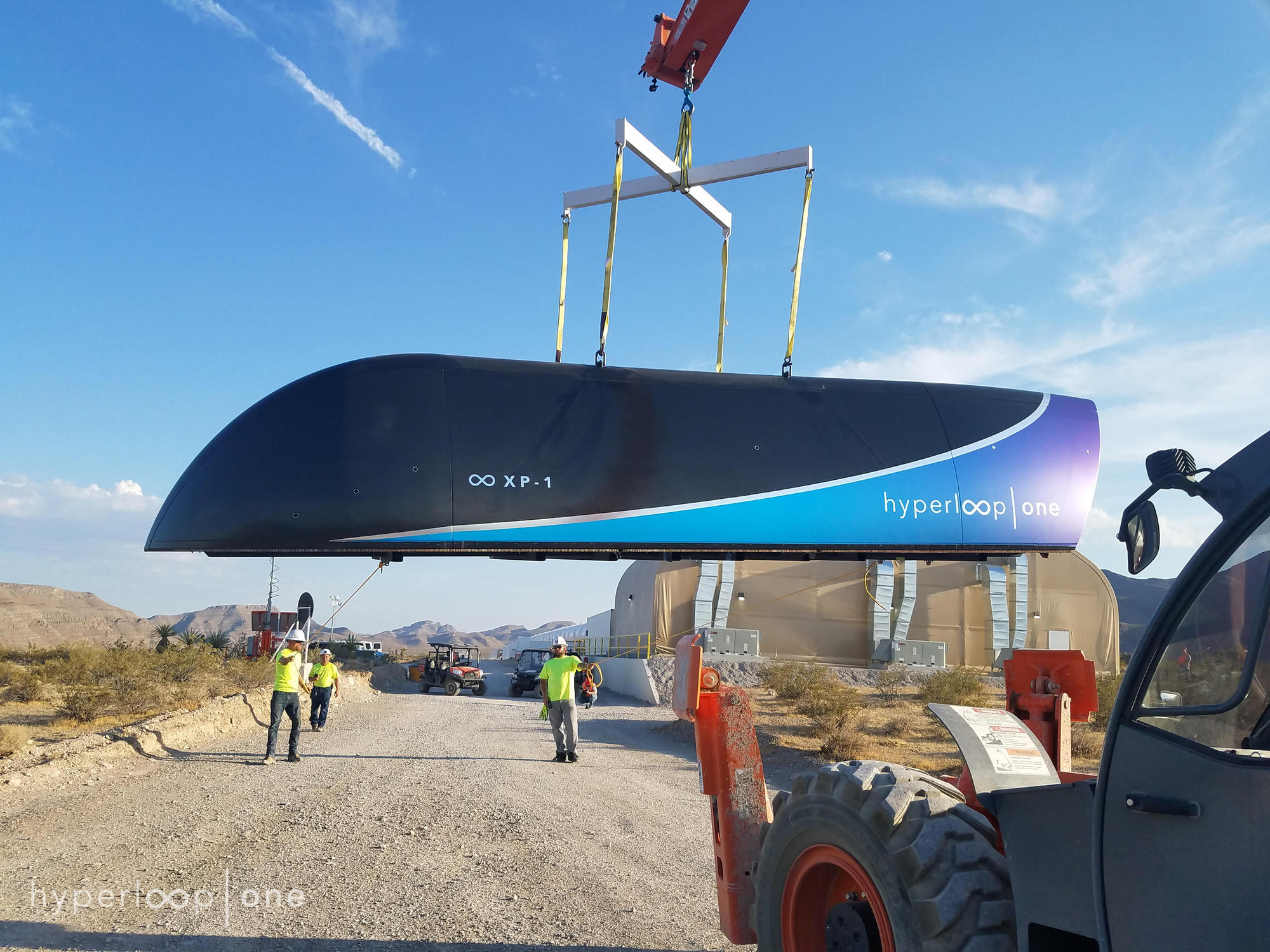
Hyperloop One says that its composite pod, designed to follow the Hyperloop travel system conceived by entrepreneur Elon Musk, has successfully completed its second phase of testing. On 29 July 2017, the company completed Phase 2, achieving historic test speeds traveling nearly the full distance of the 500-meter DevLoop track in the Nevada desert.
The Hyperloop One XP-1, the company’s first-generation pod, accelerated for 300 m and glided above the track using magnetic levitation before braking and coming to a gradual stop.
‘This is the beginning, and the dawn of a new era of transportation,’ said Shervin Pishevar, executive chairman and co-founder of Hyperloop One. ‘We’ve reached historic speeds of 310 km an hour, and we’re excited to finally show the world the XP-1 going into the Hyperloop One tube.’
With Hyperloop One, passengers and cargo are loaded into a pod, and accelerate gradually via electric propulsion through a low-pressure tube. The pod quickly lifts above the track using magnetic levitation and glides at airline speeds for long distances due to ultra-low aerodynamic drag. Made of structural aluminum and a lightweight carbon fiber, the shell measures 28 feet long.
This story is reprinted from material from Hyperloop One, with editorial changes made by Materials Today. The views expressed in this article do not necessarily represent those of Elsevier.




